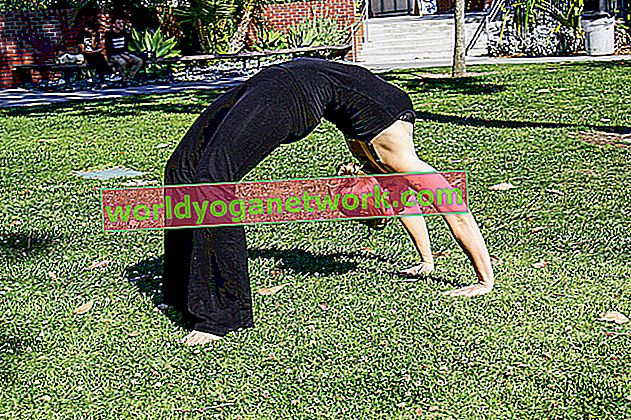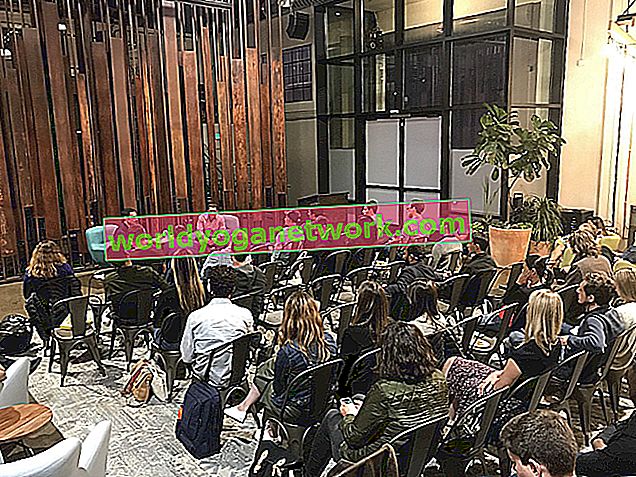
The mind wants things to be linear, definable, and manageable. It understands things in dualistic terms. It wants solutions and a list of steps we can take to arrive at those solutions. But the idea that yoga is a process of spiritual evolution—rather than a linear progression to something that we must find “out there”—is essential to understanding the Yoga Sutras from a Tantric perspective.
See also Tantra Yoga's Key to Vitality: The 7 Chakras
A Tantric Approach the Yoga Sutras
The eight limbs are both a sequential system and a holistic practice. There is an internal logic to moving from one limb to the next in the given order. The yamas and niyamas help us to approach asana with the proper intention for practice; asana prepares the body for working with the breath; quiet and controlled breath helps us to withdraw the senses, which helps us focus the mind, and so on. But the Eight Limbs can also be applied as a holistic practice in which all the limbs function simultaneously and synergistically. From this holistic perspective, the practices are done in a way that best suits the needs of the individual in order to evolve spiritually.
The Eight Limbs are like a road map to samadhi. When you are traveling to a destination, you consult a map and plan a route. But then, when you are actually on the road, you may encounter circumstances such as traffic and detours. You might not immediately know which way to go. So you consult your map for alternative routes and adjust your plan accordingly. The more you know the landscape, the easier it is to move through or avoid the trouble spots.
See also Get to Know the Eight Limbs of Yoga
How one uses the map of the Eight Limbs depends on one’s karma and where one is in the development of one’s practice. One might need to spend time going from limb to limb in a prescribed order, because it is not always clear what our karmic circumstances are. Once we have established our practice and developed some perspective, or viveka, we might be able to quickly transcend a trouble spot and apply the limbs in more individualized and nuanced ways. Our unique karmic circumstances dictate where, how, and for how long we need to focus our effort. What yoga practice looks like for each yogi is highly individual and changes over time.
Why Samadhi May Not Be as Far Off as You May Think
From the perspective of the limited mind, samadhi seems like a goal in the future that we will someday arrive at or not. We may succeed at it or we may fail. But if, through the process of yogic evolution and growth, we can move toward the experience of samadhi, that experience itself may show us a very different perspective. Because samadhi is beyond time, thought, and our individual attachment to outcomes, it allows us to regain the big picture that is beyond the reaches of the linear mind. In samadhi, we start to understand that there is no “out there,” and that experience changes our outlook, as it infuses back into how our mind relates to our experiences in life.

Der Prozess, den die Yoga Sutras beschreiben, ist ein Prozess der spirituellen Evolution und des Wachstums. Wie die Physik unseres eigenen Universums ist sie eher zyklisch, dynamisch und expansiv als statisch oder linear. Im Tantra ist eine der grundlegendsten Lehren, dass, weil wir Individuen ein integraler Bestandteil des Universums sind, die Intelligenz oder das Bewusstsein des Universums wirklich der Kern dessen ist, wer wir sind. Universelle Intelligenz ist unsere eigene wahre Natur, und Samadhi ist diese Erfahrung. Wenn wir die Erfahrung von Samadhi nutzen, wirkt sich dies grundlegend auf jeden Moment und Aspekt unseres Lebens aus, da es uns mit der größeren Intelligenz des Universums in Einklang bringt und uns aus der begrenzten und linearen Perspektive herausführt, die die Domäne des Geistes ist.
Siehe auch 5 Möglichkeiten, einen geistigen Zusammenbruch in einen geistigen Durchbruch zu verwandeln
Über Alan Finger
Der südafrikanische Tantra- und Kriya-Yoga-Meister Alan Finger begann im Alter von 16 Jahren mit seinem Vater und den bekannten Swamis des vergangenen Jahrhunderts Yoga zu studieren. Er ist der Gründer und Aushängeschild von ISHTA Yoga. Bevor Alan ein Zuhause für ISHTA schuf, war er Mitbegründer von Yoga Zone, Be Yoga und Yoga Works. Er hat mehrere Bücher mitverfasst, darunter Introduction to Yoga und Chakra Yoga.
Über Wendy Newton
Wendy Newton, E-RYT500, C-IAYT, BCPP, ist Yogatherapeutin, Lehrertrainerin, Pädagogin und Autorin. Zusammen mit Alan Finger ist sie Co-Autorin des Tantra der Yoga Sutras und Schöpferin des Tantra des Yoga Sutras Trainingsprogramms. Erfahren Sie mehr über sie auf wendynewtonyoga.com.
Aus dem Tantra der Yoga-Sutras von Alan Finger und Wendy Newton © 2018 Nachdruck in Absprache mit Shambhala Publications , Inc. Boulder, CO.
Möchten Sie die Chakren durch eine Tantra- und Kriya-Linse erkunden? Begleiten Sie Alan Finger und Sarah Platt-Finger, Mitbegründer von ISHTA Yoga, zu YJs 4-wöchigem Online-Kurs Chakras 101: Entfesseln Sie die Weisheit und Vitalität in sich. Durch Lektionen, Meditationen, Asanas, Mantras und Visualisierungen lernen Sie, wie Sie diese wirbelnden Kräfte subtiler Energie von der Wurzel bis zur Krone ausgleichen können. Sie werden auch die Lücken ausfüllen und herausfinden, was genau Chakren sind, woher sie kommen und wie sie funktionieren. Die Ergebnisse: Die Fähigkeit, Ihren Geisteszustand zu ändern; Tragen Sie sich mit mehr Selbstvertrauen und Leichtigkeit; und nutzen Sie Ihre angeborene Intelligenz und Kraft. Heute anmelden!


